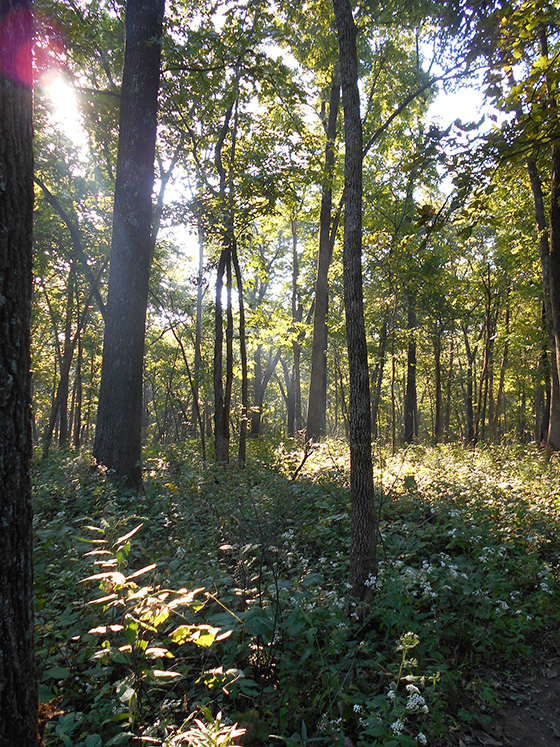
Oak-Hickory woodland is the most common type of natural community at Shaw Nature Reserve. The woodland is of two types. That part of Shaw Nature Reserve north of the Trail House has rolling hills, broad valleys, and meandering streams and is similar to Missouri north of the Missouri River. The part between the Trail House and the Meramec River has steeper hills and ridges and narrow valleys with intermittent streams and is similar to the Ozarks. This area of steeper topography may also be called an Ozark Upland Forest. The greater relief in this area is due to the downcutting action of the Meramec River during the past 2.5 million years. Many species of plants and animals endemic to the Ozarks are found in this area. The ridges and upper slopes of this area have thinner soil and support different species of trees and herbaceous plants than the lower slopes and valleys with their deeper soil.
White-tailed deer, red and gray squirrels, and wild turkey are common animals of the woodland since they feed on acorns and hickory nuts. Bedrock and bluffs exposed in the upland forest are of the Ordovician Period, about 450 million years old. Woodchucks and cottontail rabbits are found in the border area of woods and meadows. Raccoons, opossums and striped skunk are also members of this community, but are seldom seen because of their nocturnal habits. The varied topography and great diversity of trees, spring wildflowers, and animal life make this area popular with both the serious nature student and those who enjoy an outing in a beautiful and quiet natural area. The woodland is especially beautiful from March to June, with a succession of over 250 species of wildflowers blooming in varied habitats.
At Shaw Nature Reserve we use fire to restore our woodlands to their original state with mature trees and open forest floors. We also manage against many species of non-native shrubs like Japanese privet or vines like wintercreeper. With volunteer help, we also collect more than 700 pounds of seed annually from more than 200 plant species, much of which gets scattered in woodlands that we are actively restoring biodiversity to.